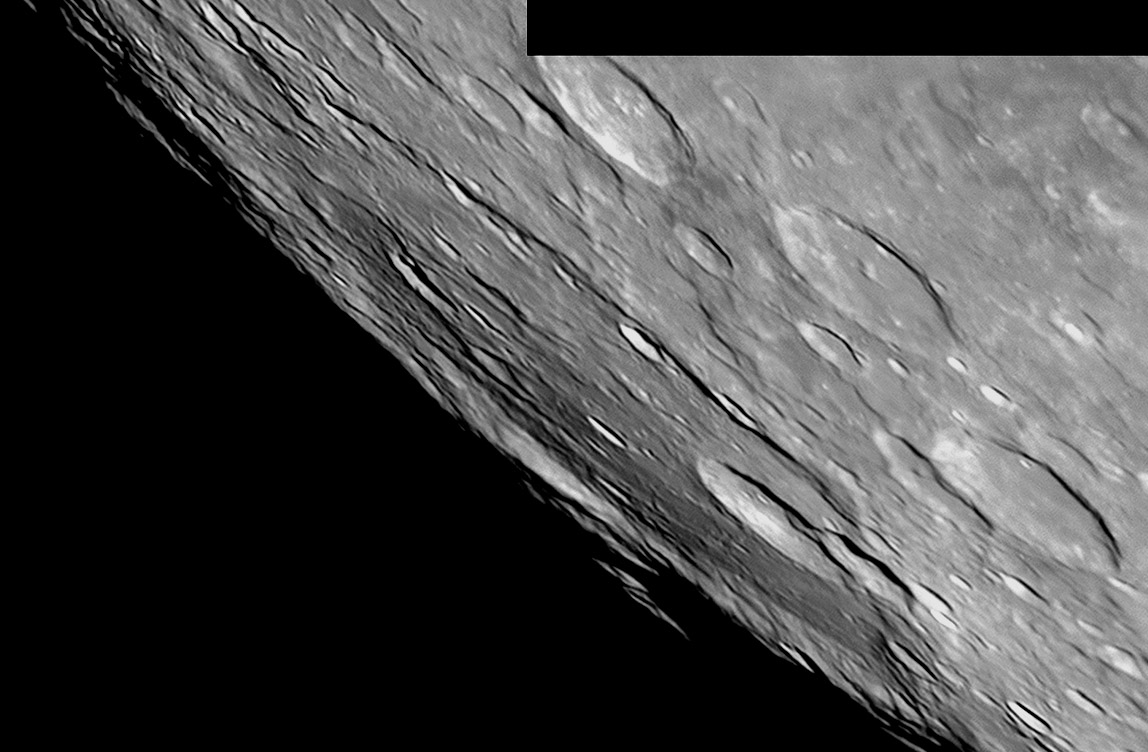image by Stefan Lammel, Uxbridge, England
A big crater or a little basin? Bailly is a famous large (303 km) feature on the Moon’s southwest limb that is readily seen when lighting and librations are favorable. But beyond identifying it, have you studied it? Bailly lacks a central peak, but does have a series of low hills that suggest an inner ring. In impact cratering, as the energy of impact increases beyond a level that creates craters 200-300 km wide, the central peak is transformed into a low scraggily ring of hills. Bailly is an example of the onset of such a peak-ring morphology of impact basins. Although they are fairly common on Mars and Mercury, there aren’t many peak-ring basins on the Moon. Bailly is also rather old - its rim and floor are littered with many later random (and Orientale secondary) impact craters. Bailly is a an old feature, but it is not a walled-plain, nor is it a just a big, battered old crater.
Technical Details:
November 5, 2006, 02:15UT. 10″ f4.8 Newtonian + DMK21-AF0 + Astronomik Red filter + 5x Powermate.
Related Links:
Rükl chart 71
An overhead view
Stefan’s website
Yesterday's LPOD: Happy Thanksgiving!
Tomorrow's LPOD: A Cloudy Night Read
COMMENTS?
Register, Log in, and join in the comments.




